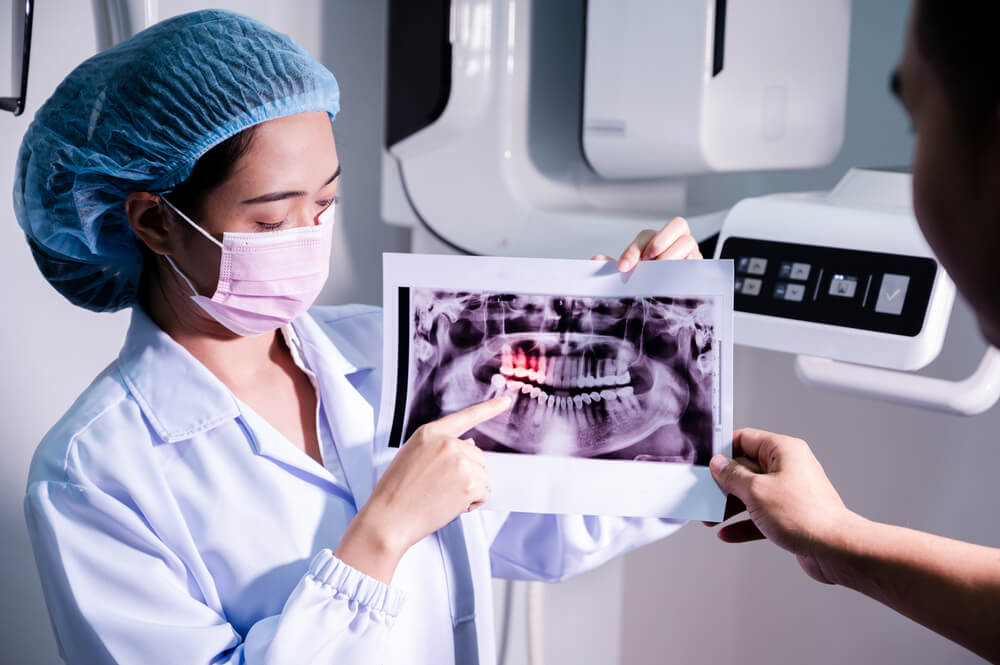A Digital Panoramic Radiograph (also known as a Panorex or orthopantomogram)is a complete wrap-around view of the face and teeth. They offer a perspective that includes all teeth, jaw joints, and sinus areas that are not available with individual x-rays. In general, they expose hidden structures, such as wisdom teeth, reveal preliminary signs of cavities, can show fractures and bone loss of the jaw, and help differentiate a sinus problem when it is suspected to have caused dental problems.

Panoramic x-rays are taken outside your mouth and simple to perform with reduced radiation. Usually, dental x-rays involve the sensor being placed inside your mouth, but the panoramic sensor is inside a mechanism that rotates around the outside of your head. A panoramic x-ray is not intended to give a detailed view of each individual tooth, but rather to provide an expanded view that includes the sinus areas, nasal areas and mandibular nerve. Panoramic X-rays are much more comfortable than bitewing X-rays especially when a patient is having discomfort inside their mouth.
Panoramic X-rays are extremely versatile in dentistry, and are used to:
- Assess patients with an extreme gag reflex.
- Evaluate the progression of TMJ.
- Expose cysts and abnormalities.
- Expose impacted teeth.
- Expose jawbone fractures.
- Plan treatment (full and partial dentures, braces and implants).
- Reveal gum disease and cavities.
How are panoramic x-rays taken?
The panoramic x-ray provides an ear-to-ear two-dimensional view of both upper and lower jaw. The most common uses for panoramic X-rays are to reveal the positioning of wisdom teeth and to check positioning of dental implants that may affect the mandibular nerve.
The Panorex equipment is a large and expensive machine that consists of a rotating arm that holds the X-ray generator, and a moving sensor attachment that captures the picture as it moves around your head. The positioning of the head and body is what determines how sharp, clear and useful the X-rays will be to the dentist. The picture scan be magnified multiple times to ensure that even the minutest detail will be noted.
Panoramic X-rays are an important diagnostic tool and are valuable for planning dental treatment. They are safer than other types of X-ray because less radiation enters the body.

